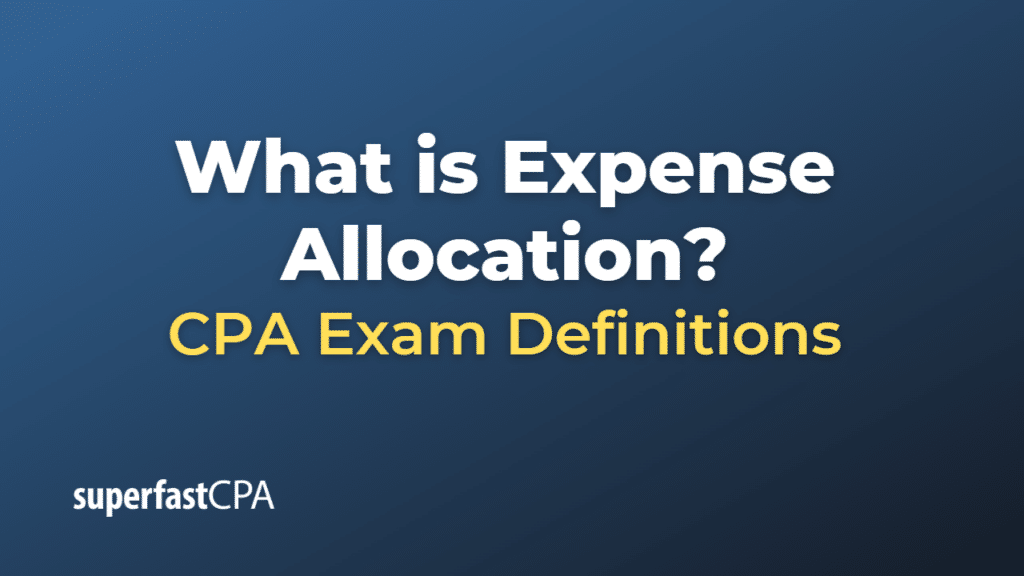Expense Allocation
Expense allocation is the process of distributing a single expense across multiple departments, products, or cost objects within an organization. This process is usually carried out for shared or indirect costs—expenses that cannot be directly traced to a single department, product, or activity.
In a company, there are certain costs that are directly attributable to specific departments, such as direct materials and direct labor. However, there are other costs, like rent, utilities, and administrative salaries, that benefit multiple departments. These are called indirect costs or overhead costs.
The goal of expense allocation is to accurately distribute these indirect costs in a way that accurately reflects the actual use or benefit derived by each department, product, or activity. This can be important for understanding the true cost and profitability of different parts of an organization, setting prices, budgeting, and decision-making.
Allocation can be based on various factors depending on the nature of the expense. For example, utilities might be allocated based on square footage if different departments occupy different amounts of space, or administrative costs might be allocated based on the number of employees in each department.
It’s important to note that while expense allocation can provide valuable insights, it is based on estimates and assumptions and is not an exact science. Different methods or bases of allocation can lead to different results, and the chosen method should best reflect the actual consumption or benefit derived by each department, product, or activity.
Example of Expense Allocation
Let’s take an example of a publishing company that has two departments, the Book Publishing Department and the Magazine Publishing Department.
- Direct Costs: The company pays each department’s employees their respective salaries. These are direct costs, directly traceable to each department.
- Indirect Costs (Overhead): The company rents an office building for $10,000 a month and it pays $2,000 for utilities (electricity, internet, etc). These costs benefit both departments and cannot be directly assigned to one department.
To allocate these costs, the company needs to decide on an appropriate allocation base. Let’s say they choose to allocate rent and utilities based on the square footage occupied by each department:
- The Book Publishing Department occupies 60% of the space.
- The Magazine Publishing Department occupies 40% of the space.
So, the rent and utilities would be allocated as follows:
- Book Publishing Department: $10,000 (Rent) x 60% = $6,000 + $2,000 (Utilities) x 60% = $1,200 The total overhead costs allocated to the Book Publishing Department is $7,200.
- Magazine Publishing Department: $10,000 (Rent) x 40% = $4,000 + $2,000 (Utilities) x 40% = $800 The total overhead costs allocated to the Magazine Publishing Department is $4,800.
This allocation process helps the company understand the full cost of operating each department, not just the direct costs. It’s essential for budgeting, setting prices, measuring profitability, and making strategic decisions. However, it’s important to remember that allocation is an approximation based on the chosen allocation base and method, and different methods may yield different results.













